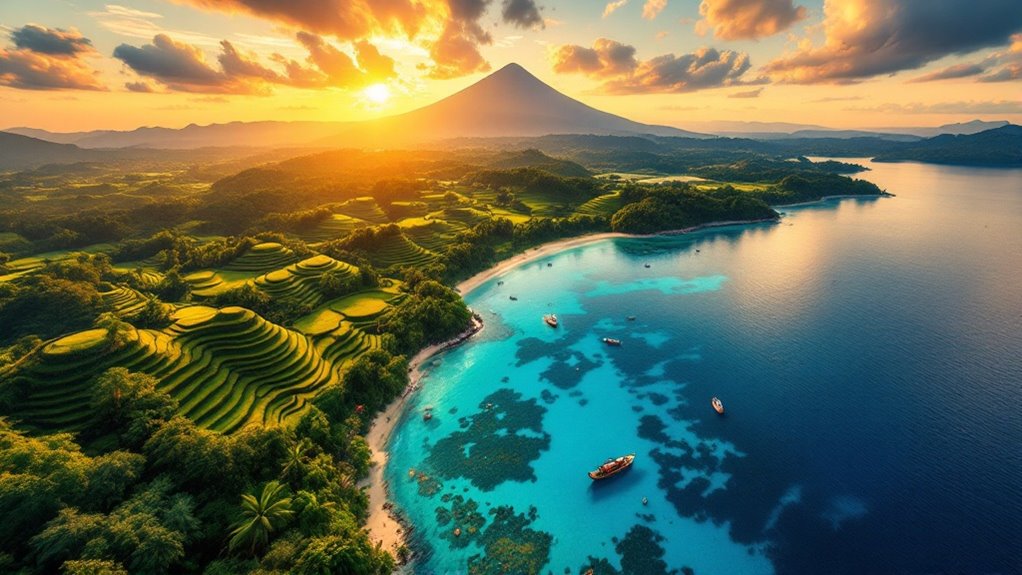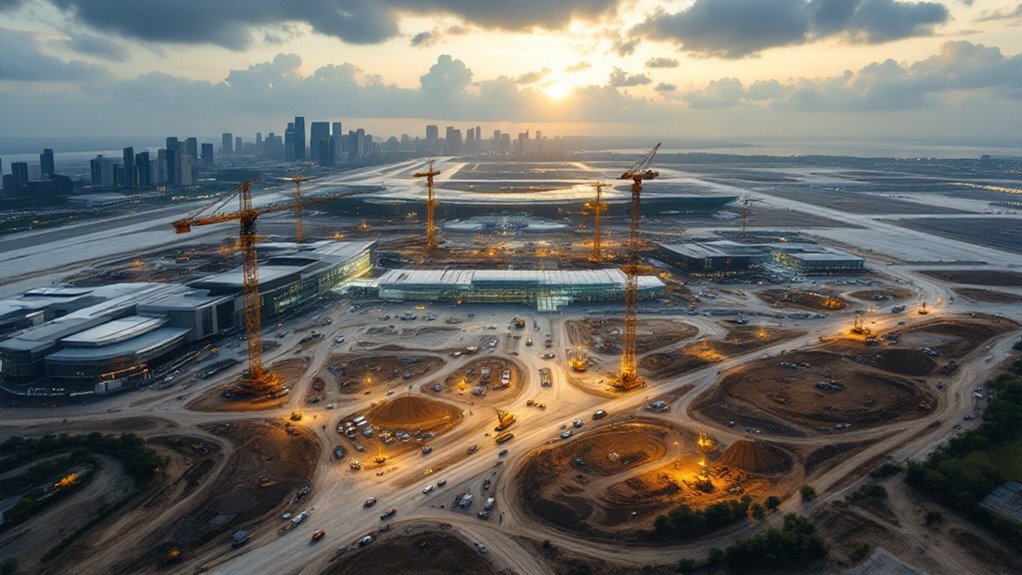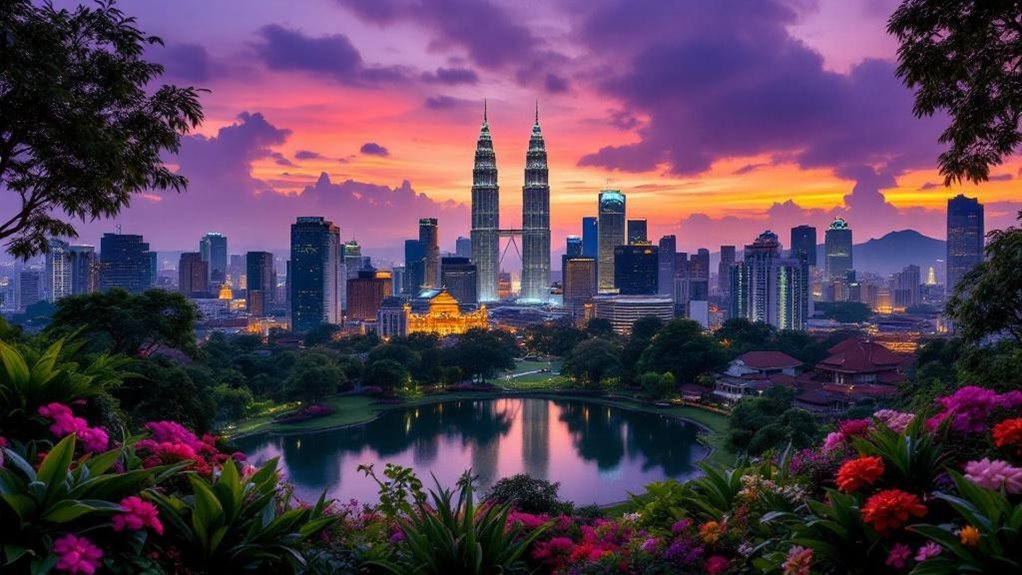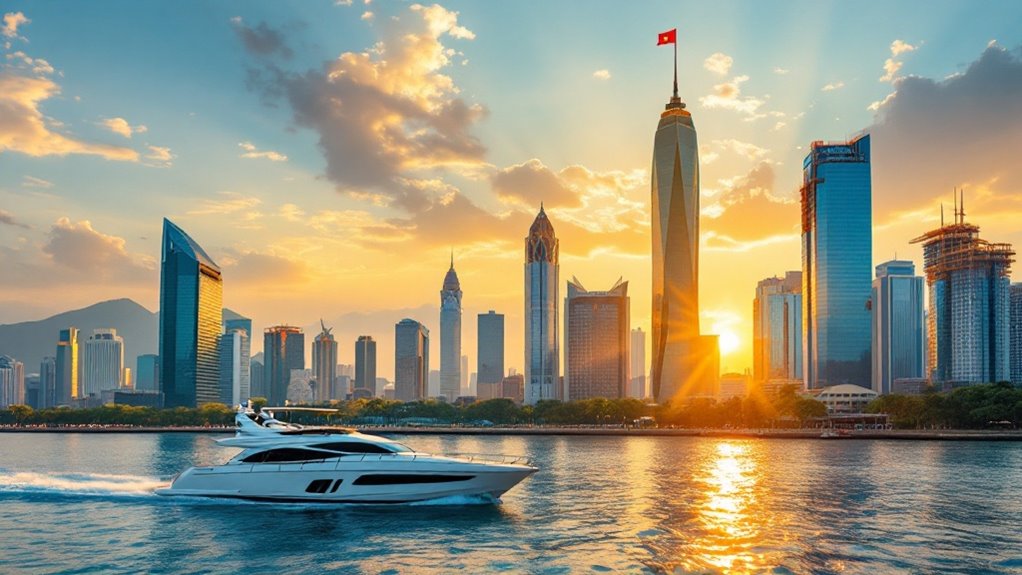Indonesia and Malaysia have become regional tourism leaders by exceeding pre-pandemic visitor levels, with Malaysia welcoming 38 million tourists and Indonesia’s Bali drawing 6.3 million in 2024. Both nations have ramped up investment in tourism infrastructure, government initiatives, and market campaigns, such as Malaysia’s upcoming Visit Malaysia 2026. Enhanced air connectivity and diverse attractions have fuelled strong domestic and international growth, solidifying their positions amid Southeast Asia’s competitive landscape. More details on strategies and impacts follow below.
As leading forces in Southeast Asia’s tourism sector, Indonesia and Malaysia have demonstrated significant growth and resilience in recent years, shaping the region’s travel landscape.
Indonesia achieved a notable ranking of 22nd out of 119 countries in the 2024 Travel and Tourism Development Index, reflecting its global tourism competitiveness. In 2024, tourism in Indonesia contributed 4.8% to the national economy, generating nearly IDR 1,008 trillion in revenue. The country attracted 13.9 million international visitors, a substantial recovery since the COVID-19 pandemic, with each visitor spending an average of $1,391 USD per trip. Both countries benefit from the availability of concise tourism sector performance data that helps inform government strategies and industry planning.
Indonesia ranked 22nd globally in tourism, welcoming 13.9 million visitors and generating nearly IDR 1,008 trillion in 2024.
Bali remained the country’s most popular destination, drawing over 6.3 million visitors in 2024, further cementing its status as a premier global hotspot.
Malaysia, meanwhile, recorded 38 million tourist arrivals in 2024, marking a 31.1% increase from the previous year. The country’s top tourism markets included Singapore, Indonesia, China, and Thailand. Total tourist receipts reached RM106.78 billion, exceeding pre-pandemic levels by 20% and representing a 43.7% increase compared to 2023. In early 2025, Malaysia’s tourist arrivals continued to rise, with 6.7 million visitors representing a 31.3% increase compared to the same period the previous year.
The Malaysian government has committed RM550 million to fund cultural programs and tourism events in 2025 and is preparing for the Visit Malaysia 2026 campaign to catalyze further growth in the sector.
Both Indonesia and Malaysia benefit from robust regional travel demand and improved air connectivity, facilitating easier movement for both regional and international tourists. Domestic tourism has also surged, with Indonesians making a record 1.02 billion domestic trips in 2024, a 21.61% increase over the previous year.
Both countries have invested strategically in tourism infrastructure and marketing, recognizing the sector’s critical role in supporting national economies and generating employment.
Competition within Southeast Asia remains intense, as both countries vie with regional peers such as Thailand and Vietnam. However, their diverse offerings—from natural attractions to vibrant cultural experiences—continue to attract a broad spectrum of travelers.
Strategic planning, investment, and collaborative efforts position Indonesia and Malaysia as dominant players in the evolving regional tourism market.









